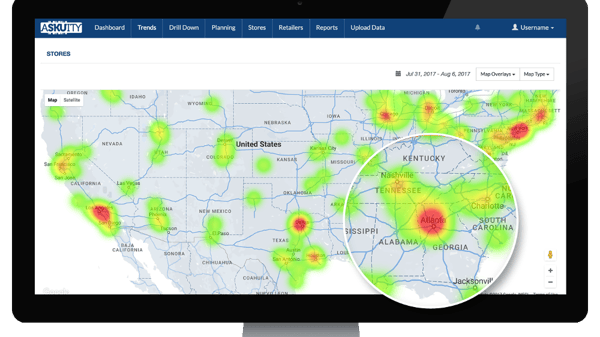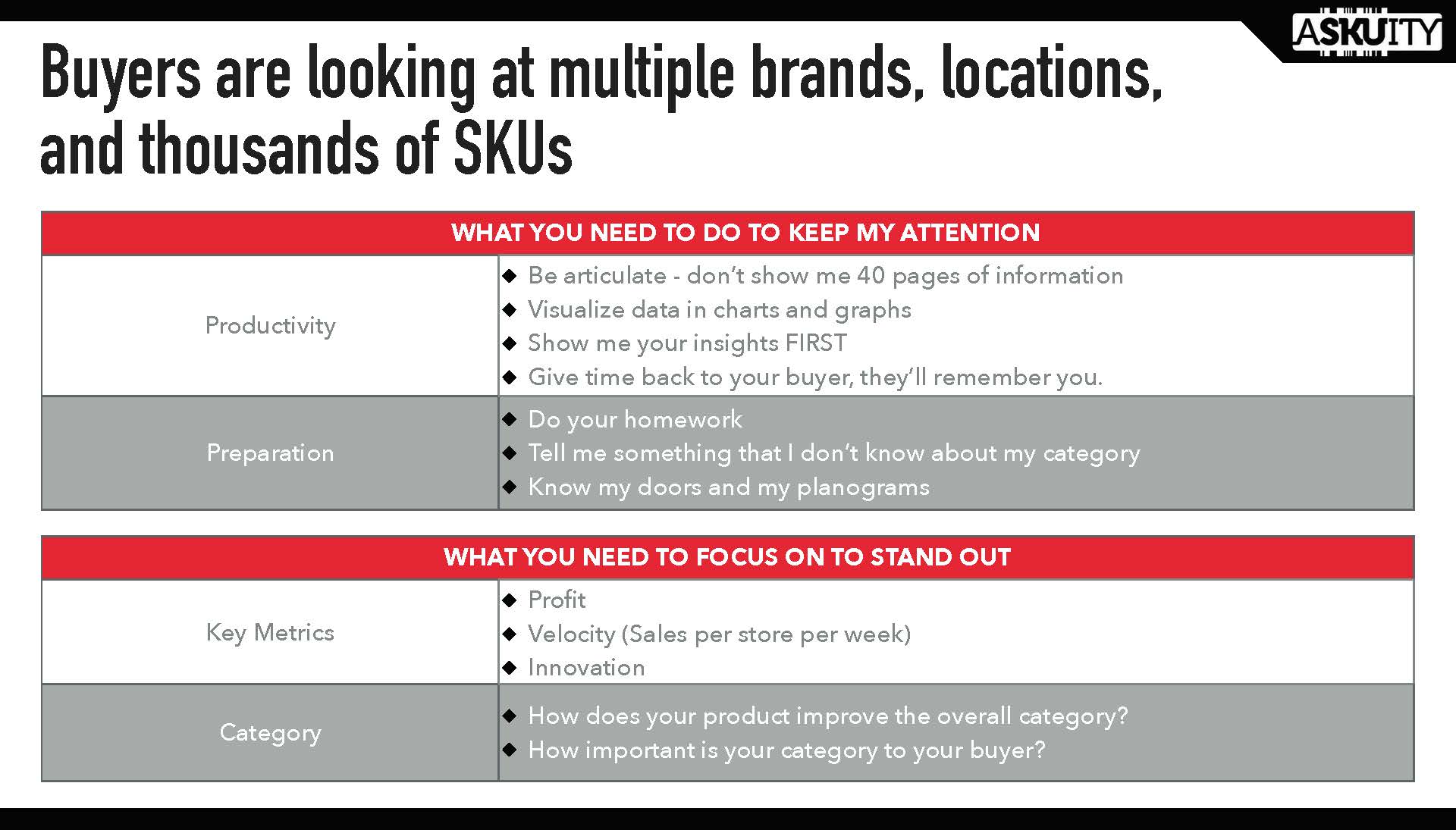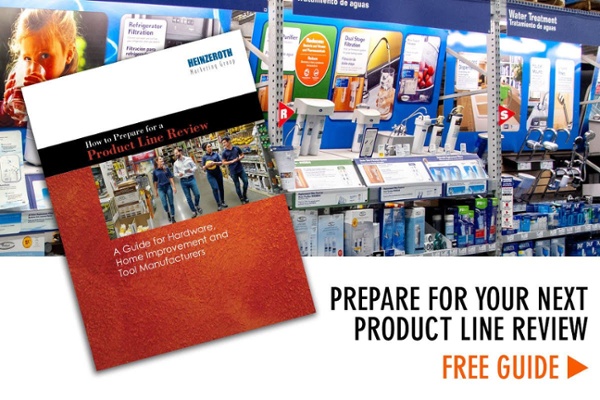MORE PLANNING IDEAS FOR SUCCESS IN PRODUCT LINE REVIEWS:
Considering the wide range of point-of-sale tracking tools available to help you prepare for your next Product Line Review (PLR), you may be missing the boat if you aren't equipped to address the metrics your merchant is most concerned about. Chances are, you may otherwise be inclined to go over things that many buyers consider to be a waste of time. And even if you are bringing loads of information, perhaps it isn't presented in the way your buyer wants to view the figures. To help you plan for your next presentation, here are some thought starters you might keep in mind.
 In order to plan your presentation with adequate time to present POS performance data and shopper insights for easy understanding, it may be wise to evaluate and possibly prune your go-to list of what you normally bring into those meetings. That is particularly true if you've had previous experience with the retailer's review process and may have covered some of those topics before. Don't insist on going over the same old things.
In order to plan your presentation with adequate time to present POS performance data and shopper insights for easy understanding, it may be wise to evaluate and possibly prune your go-to list of what you normally bring into those meetings. That is particularly true if you've had previous experience with the retailer's review process and may have covered some of those topics before. Don't insist on going over the same old things.
If your planograms and other usual presentation materials aren't all relevant to how the buyer is being measured this fiscal year, maybe it's time to step outside your standard Powerpoint outline. Certainly, a fresh new planogram can and should be based on analysis of recent sales rates. Visual merchandising in general is still of interest to most buyers. However, what we're seeing is that you will make a stronger rationale for your brand by tying any new proposed initiatives to the numbers.
So what are some of those salient topics that should be on the forefront of your discussions? The retail data tracking company Askuity has some great insights on this very subject. They suggest starting with a new understanding of buyer expectations:
• Realize first that your view isn't your buyer's view.
Buyers often have responsibility for thousands of SKUs and often major sections in the stores. They are actually only “buyers” part time, with most of their work focused on operational issues: Are next week’s promos set? Is it time to change out seasonal planograms? What is on closeout? How to get more product into areas affected by storms? You might also think about how important your category is to the merchant. Certainly, you want to do what you can to stand out. But keep your proposal to things the buyer is realistically planning to execute as part of his/her overall responsibility. It's OK to show some other thought-provoking ideas, of course, but you might position them in the context of "planting seeds" for the future.
• Find out what KPIs your buyer relies upon and wants to improve through the line review process.
Talk about this first! Because margins are always important, ask in advance of the meeting what the gross margin and margin growth expectations are for the buyer. If 10% growth is the benchmark for the next 12 months, and the buyer is being measured on that, showing plans for anything less may place your product line in a tough spot.
• Present your data in a manner that is consistent with the retailer's measurement tools and calendar.
If your company is on a fiscal year, and the retailer is on a calendar year, do your best to organize data according to your customer’s financial planning period.
• Ask your buyer for POS sales data in as detailed a fashion as available.
Do this even if you think you have sufficient information to do a proper analysis. You may discover some other important issues you can bring up in the meeting. And the buyer will appreciate that you are basing your presentation on the retailer’s own data.
Also explore what it would take to obtain insights through Askuity monitoring. Doing so may uncover some critical things to build upon, or to correct.

Example mapping of sales hot spots. Source: Askuity 2018.
• Very important: Respect the buyer's time.
Allow space for questions and don't go over the allotted time. When you come in with a 50+ page Powerpoint deck, it's tempting to cover it all. (Don't be afraid to stop talking.) If you've done your homework and know what is key to a successful outcome, there won't be a need to fill time.
Here are some useful insights from Phil Chang, former buyer at Target and an Askuity consultant:

Source: Askuity, Confessions Of A Retail Buyer 2018
Another retail data source, InfoScout, is doing some interesting things with omnichannel sales data. They have developed a massive 300,000 person consumer panel that is quite unique in the way purchase behaviors are voluntarily shared for research purposes. Using a smartphone app, their panel members scan and save their store receipts and as well as eReceipt purchases. Brands that subscribe to the service have access to daily information on purchases along with the potential of quick surveys to people that have just purchased the product or like products. Survey results can be obtained in days, not weeks as for other research you may wish to do in advance of a line review. Learn more about InfoScout here.
Once again, as you prepare for a presentation, don't be shy about asking what the buyer considers important for the line review. You may be surprised at the answer. And if those important factors aren't revealed, or you suspect there are some hidden agendas, do your homework to prepare as best you can.
 One brand's account manager I know makes it a practice to find out which stores the buyer visits and contacts regularly. Go to those stores as he does, if possible, to observe shoppers and also see what you can learn from store associates and the store manager. Perhaps there are some very evident issues such as stock-outs that you need to know. Also check product returns at those stores. Investigate returns for your own brand as well as for that of competitors. That general subject is often a sore spot and may be a critical topic that the buyer is going to ask you about.
One brand's account manager I know makes it a practice to find out which stores the buyer visits and contacts regularly. Go to those stores as he does, if possible, to observe shoppers and also see what you can learn from store associates and the store manager. Perhaps there are some very evident issues such as stock-outs that you need to know. Also check product returns at those stores. Investigate returns for your own brand as well as for that of competitors. That general subject is often a sore spot and may be a critical topic that the buyer is going to ask you about.
As mentioned above in the suggestions from Askuity, be ready to discuss anything that addresses what your brand is doing to improve the category. Most professional buyers are usually seeking good, solid reasons how your product line helps them maximize sales, margins and customer satisfaction. Load the first part of your presentation with those key points of difference.
If time permits, the last part of your meeting can be devoted to questions/answers and updating the buyer on other details of your product line. Even better is to have actual planograms and product samples set up for evaluation. Though those core materials may be viewed as baseline only, we know that they take a great deal of hard work, creativity and understanding of the retailer. We aren't suggesting that they be overlooked. In fact, our brand support team is often called upon to help with those very things such as:
- Renderings of planograms with updated assortments or refined selection system. Mark any suggested additions and how you are making room for them.
- Top signs
- Aisle violators
- Endcaps
- Promotional quarter pallets
- New content for the retailer's website
- New packaging design systems and mockups
- Product Knowledge (PK) materials for store associates
- Summaries of end-user ad campaigns including social media initiatives
- Photography and video representing anything "new" since the last meeting (example: new products.



